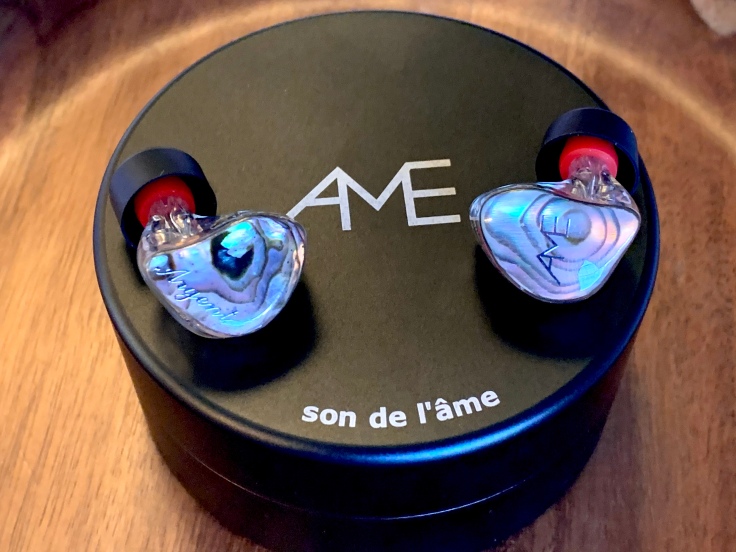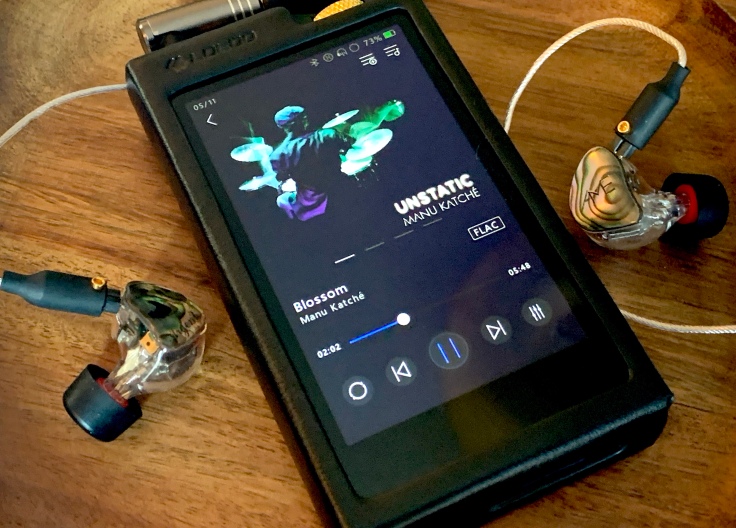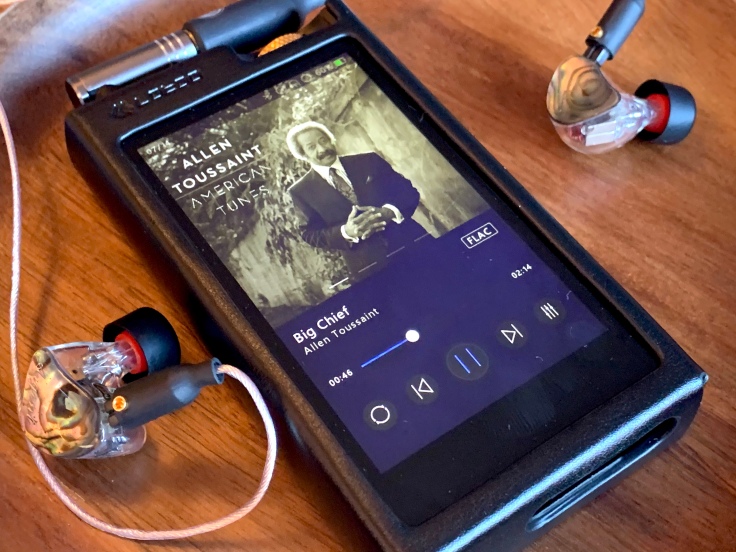Product page :
https://amecustom.com/products/argent
Price : 1200$ (universal), 1350$ (custom)
Fit, Build & Isolation
The Argent features an excellent build and the shell are quite compact except for thickness which means they do stick out a bit, fit is good but shallow and I had to do some tip rolling to accommodate my big ears (either double flange or something like large EarFoams from Flare worked for me). The shell material looks like transparent acrylic and show the nice craftsmanship of the inside, and isolation is fair. The demo unit features the abalone pearl faceplate and looks gorgeous.
Like the Radioso (and even more so actually) the sockets are on the tight side on the demo unit and I was unable to use any third party cable except for PlusSound x Series.
Introduction
Âme Custom is a relatively new comer to the IEM market based in South Korea. Their brand is named after the french word for “soul” and their tagline is “le son de l’âme” (the sound of the soul). They started as a small retail shop for local artists and musicians and recently expanded to the audiophiles market with 3 models : the Gravitas (1DD, 3 BA), Argent (4 BA, 2 EST) and Radioso (1DD, 1BA, 4 EST).
They aspire “
to create the most dynamic in-ear experience. Our earphones are carefully crafted in-house utilizing only the finest components available and expertly tuned around the principles of the Olive-Welti target profile for the most engaging sound impressions and unparalleled listening experience.“
Among the lineup, the Argent is Âme co-flagship a
“hybrid electrostatic IEM, integrating four balanced armature drivers and two high frequency electrostatic tweeters for an immersive, well-rounded sound featuring warm lows and sparkling vocals.”
Does the Argent deliver on its promise? Let’s see!
Sound
It’s always exciting to discover a new brand, as it doesn’t start with expectations, especially since there aren’t much impressions out yet. I was curious to say the least to hear the Âme house sound, and already have a baseline with the co-flagship
Radioso.
As you know I value first impressions and the first thing that struck me with the Argent is the smooth, rich textures and full signature with a great touch of air keeping the stage quite open and wide. This is one outstanding characteristic of the Argent in this type of signature : a very good upper treble extension that grants the Argent a very good resolution, separation and soundstage.
Bass
Despite the Argent being powered by a dual BA setup versus the dynamic driver of the Radioso, the bass has very good impact and extension. It doesn’t extend as low or feature the same impact as the dynamic driver of the Radioso but it’s a fun and playful bass.
The Argent feature is a smooth IEM, with a softer attack overall and this includes the bass, which has very satisfying presence including a strong bass line but lacks the snappy attack of the Radioso that is part of the slam factor and excitement that can satisfy the inner basshead in me. On the flipside is a “relaxed” fun bass which means it’s non fatiguing over longer sessions. The Argent is consistent with the Âme house sound and features rich textures and layered bass.
Mids
The Argent mids have a good touch of warmth but not overly so, with a smooth attack and longer decay with notes lingering a bit providing a “romantic” midrange presentation. It’s not overly done either and the Argent has articulate mids with good separation, just less clear than the Radioso and with a slightly warmer tone.
Vocals are sweet but again it’s not overdone, it makes female vocals more sensual and appealing and male vocals a tad deeper, all the more apparent since vocals are slightly forward.
The Argent upper mids bring balance to this euphonic, smooth and rich midrange with good energy : acoustic guitar has good bite, violin and piano notes have great energy and saxophones have satisfying bite all with a smooth delivery.
Treble
With its playful bass presence and its smooth, rich and sweet mids the Argent treble was bound to be key to its signature and indeed it brings a lot of balance.
First, the upper treble has very good extension and although it’s less present than the Radioso’s it’s key to the air and resolution of the Argent as well as its overall refinement. It opens up a very balanced soundstage and contribute to the imaging which is very good. Transients are fast and there is this airy quality to the upper treble that contrast against the fullness of the mids.
Second, the lower treble has very good energy and piano overtones are really a treat. This is an engaging treble, in the spirit of the upper mids delivery is smooth and the treble is never hot. Tone is quite accurate contrary to the warmer tilt in the mid section.
Verdict
In a crowded and competitive market, it’s pretty hard to launch a new brand especially in the upper tier. Âme definitely came up with a worthy competitor at its price point, with their own house sound and tuning signature as we’ve seen in the
Radioso review and will see in the Gravitas review.
Since the Argent is a co-flaghsip to the Radioso, it had to have a distinctive tuning so that customers would have different flavors and Âme certainly succeeded here. The Radioso is clearer, more transparent, snappier and punchier while the Argent is the romantic one, with a rich smooth signature that is highly engaging in its own way.
If you’re looking for a smooth IEM with playful bass, rich textured mids with a good touch of warmth while not sacrificing upper mids and treble energy as well as good resolution and air, the Argent certainly deserves your attention!
Listening notes
I spent approximately 40 hours with the Argent, listening on Cayin N6ii (E01) and Lotoo PAW 6000 using the stock cable (unbalanced) and PlusSound x Series (balanced).
Special Thanks
Thanks to Âme Custom giving me the opportunity to review the Radioso as part of the Âme Tour. The unit is a loaner and must be returned. As usual, this review is my honest opinion. No incentive was given for a favorable review.
Accessories
- Metal carry case
- 6N OCC Pure Copper Silver Plated Cables
Specifications
- Frequency Range: 10Hz – 80kHz (Theoretical)
- Sensitivity: 100db SPL (@1kHz)
- Impedance: 19Ω @ 1kHz (DCR 62Ω – 43Ω)













































